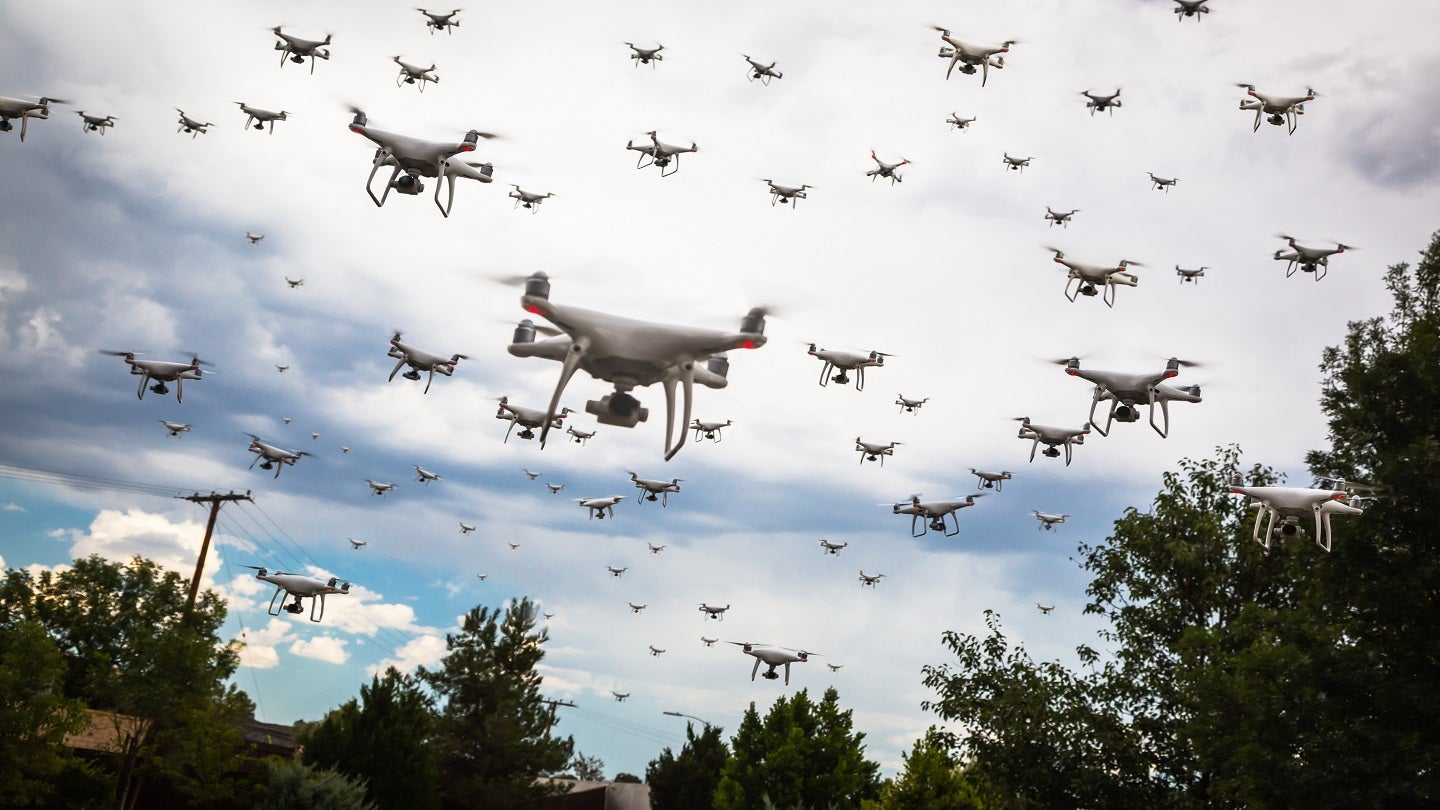
A collaborative swarm of drones detected and tracked military targets during the first AUKUS artificial intelligence (AI) and autonomy trial in the UK.
Organised by the UK’s Defence Science and Technology Laboratory (Dstl), the trial was held at Upavon airfield in Wiltshire, UK.
The trilateral demonstration of AI and autonomy technologies was performed as part of the AUKUS Advanced Capabilities pillar, known as Pillar 2.
It was the first time the jointly developed AI capability of Australia, the UK and the US was deployed on coalition autonomous systems to undertake an intelligence, surveillance and reconnaissance (ISR) mission.
The AUKUS collaboration aims to advance these technologies into military application.
The trial was conducted in a representative environment and included live retraining of models in flight and interchange of AI models between the participating countries.
UK Deputy Chief of Defence Staff (Military Capability) lieutenant general Rob Magowan said: “This trial demonstrates the military advantage of AUKUS advanced capabilities, as we work in coalition to identify, track and counter potential adversaries from a greater distance and with greater speed.
“Service personnel, scientists and engineers from our three nations combined to develop and share critical information to enhance commanders’ decision making.
“Accelerating technological advances will deliver the operational advantages necessary to defeat current and future threats across the battlespace.”
The AUKUS exercise witnessed participation from more than 70 military and civilian defence personnel and industry contractors.
The trial conducted target identification tests with the participating aerial and ground-based vehicles.
The platforms that took part in the exercise included Blue Bear Ghost and Boeing/Insitu CT220 unmanned aerial vehicles (UAVs), Warrior armoured vehicle, Challenger 2 tank, and Viking uncrewed ground vehicle (UGV).
A FV433 Abbot self-propelled gun and former Eastern Bloc BMP OT-90 infantry fighting vehicle also participated in the tests.
The Australian, UK, and US teams jointly developed machine learning (ML) models and flew them on different national UAVs.
The ML models were rapidly updated to incorporate new targets and shared among the three coalition partners to meet evolving requirements of the mission.
Under Pillar 2, the coalition is working on several advanced technologies and capabilities to enhance peace, security, and stability in the Indo-Pacific region.
A joint statement issued during a trilateral meeting in March this year indicated that the UK and Australia will procure a next-generation nuclear-powered submarine (SSN) under the AUKUS pact.



